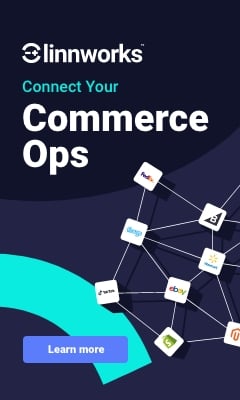Ensuring the R in CRM stands for relevancy
Today’s consumer, and we are all consumers, engage with and remain loyal to brands that show they listen, understand and act accordingly. They expect an integrated experience across all devices, with every transaction and event syncing in real time.
Danny Crowe – Planning Director – TwentyCi
Today’s consumer, and we are all consumers, engage with and remain loyal to brands that show they listen, understand and act accordingly. They expect an integrated experience across all devices, with every transaction and event syncing in real time.
So, while marketers are trying to use data to build relationships, consumers just want seamless, modern service. That’s why across all sectors, we’re now seeing old-fashioned brand loyalty give way to loyalty based on functionality, service and convenience.
They are seeking a conversation that is about them, or put another way, relevancy.
However, whether you’re in retail or leisure, the finance sector or the property market, data is everywhere, and its sources and uses are becoming more and more diverse. The days of one simple data set sitting neatly in one central system, being managed by one team are fast becoming extinct. In fact, it could be argued that Big Data is lots of Small Data dispersed around an organisation.
Choose context for relevant, measurable marketing
Bringing context into marketing decision-making brings a new spin to CRM. Instead of Customer Relationship Marketing, a better definition in today’s data-rich, always-on and connected world is ‘Conversations that are Relevant and Measurable’.
By understanding the motivation behind the behaviour, brands can move beyond tactical offers to deeper ongoing relationships where communications are not just about eliciting sales, but about giving consumers what they need according to a bigger picture of their life events. It’s looking beyond one transaction or online search and playing a longer game.
Marketers instinctively know that acting on consumer insight is essential, with many rightly obsessed with finding patterns of consumer behaviour to help inform and implement personalised marketing campaigns. This kind of analysis puts customers and prospects into specific segments so they can then receive communications that are collectively fairly relevant to that group of customers. It is highly logical to identify a customer whose spend has dropped and then put them into a lapse programme, but not if you knew why they had changed behaviour. It lacks one essential element – context.
One of the best ways he/she can add context to their customer knowledge is to use life event data. Whether it is moving home, having a baby, going to university or retiring, these are an opportunity for the consumer to reassess products and choices. A new baby can mean new holiday types, new furniture, a different car or even moving to a bigger house near a better school for the years to follow. And that home move can trigger a change in supermarket, utility company, restaurants and train service, not to mention a fortune spent on home improvements.
Factual life event data is far more powerful than inferred data, which is more commonly used in marketing, as it enables brands to truly understand the motivations driving consumer activity rather than having to make assumptions.
For example, using homemover data we have found that there is an interesting observed correlation between moving home and wine purchasing. Many people run down their wine supplies for several months before they move. Then, post move, they stock up again. They haven’t lapsed, they have simply changed their behaviour. So, instead of sending a series of discount offers while someone is planning to move (which will be seen as irrelevant and, perhaps, annoying), the retailer can wind down communications until the customer moves. At that point a bulk buy offer or even a celebratory bottle of fizz is likely to do far more to stimulate sales.
The potential offered by a context led marketing approach can be seen very clearly within the homemover market. An average move takes at least 18 months from start to finish, including 12 months post-move during which time the main home improvement spend occurs. If this consumer group can be reached during the homemover process, there exists an opportunity to connect with people at a time when they are likely to make many more major purchases compared to normal. The purchasing power of homemovers equates to £12 billion annually across the UK – with those purchases being typically spread across at least 12 months.
Forecasting customer engagement alongside the homemover process
Customer Engagement is not a straight line, our need for different products and services fluctuates as we go through life, both in the short and long term. Life events throw up the biggest changes in these needs, as we’ve discussed.
By matching transactional data against our homemover universe, we create what have affectionately become known as Homemover Waves. They show when purchasing dips and spikes across several industry sectors as homemovers shift from putting their house on the market, through to moving in and beyond. So, for example, furniture buying actually kicks in before people move, DIY happens at the point of moving in, electrical goods are bought a month or more afterwards and, presumably following the stress of the move, holidays become a big purchase between two to six months post-move.
This insight has proven invaluable for the retailers who have mapped their own data against our homemover data.. Businesses can identify what proportion of their customers are homemovers – for example, 20% of bed buyers and 35% of consumer electrical buyers– and by understanding the size of this opportunity, can dedicate more budget to target the homemover audience.
Customer Engagement isn’t just about selling, as we know. If the peak for electricals is +4 months after move, the engagement needs to start much earlier. The typical consumer will start to think about a new TV 6 months before buying one, during which time they are creating their preferences. So, a simple flag on the database when a house is put on the market can act as a major trigger to change the content from selling to inspiration lead.
Homemover targeting for customer acquisition
The Homemover Wave doesn’t only help with customer retention. Where homemovers are quantified as a worthwhile opportunity for retailers, they can also target prospects who are moving and look to engage with then following a similar approach. Homemover data can be used across a wide variety of digital and traditional channels including direct mail, email, programmatic advertising and social media, enabling brands to connect with homemovers using the right channel – as well as at the right time and with the right message.
This approach is proven; we’ve worked with retailers where homemovers consistently outperform other, non-homemover retail consumers, remaining at the top of the pile for at least 12 months.
Striving for relevancy is essential if we want to engage customers. Having the best joined up digital/retail journey is important, but it will fail if the content and timing are not relevant to the consumer. Let’s aim to change the meaning of CRM to have Conversations that are Relevant and Measureable!
Find out more at www.twentyci.co.uk or call 01908 829300














